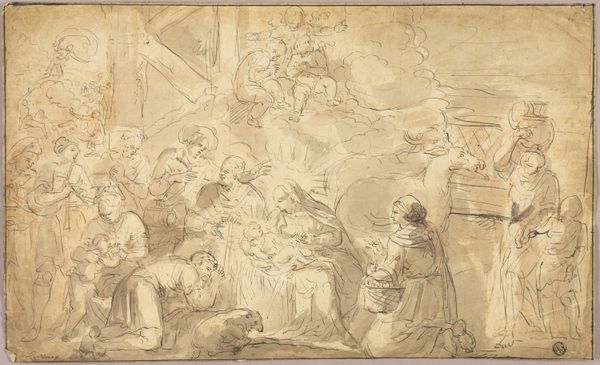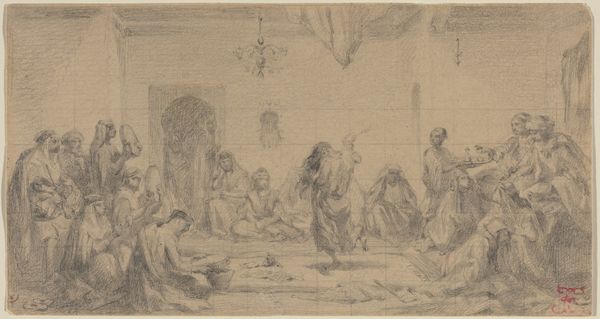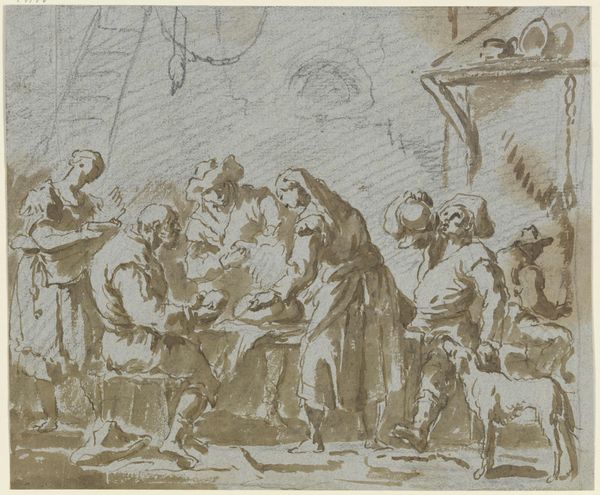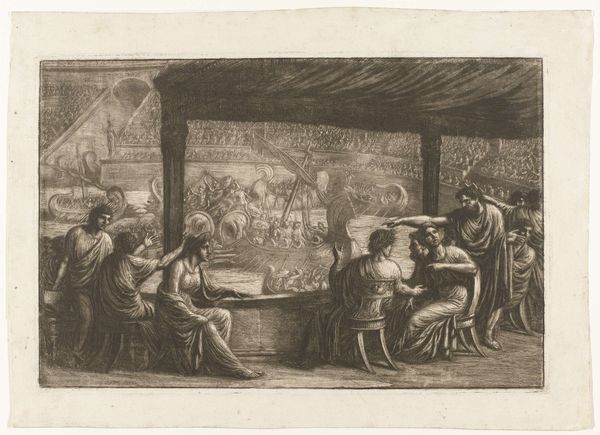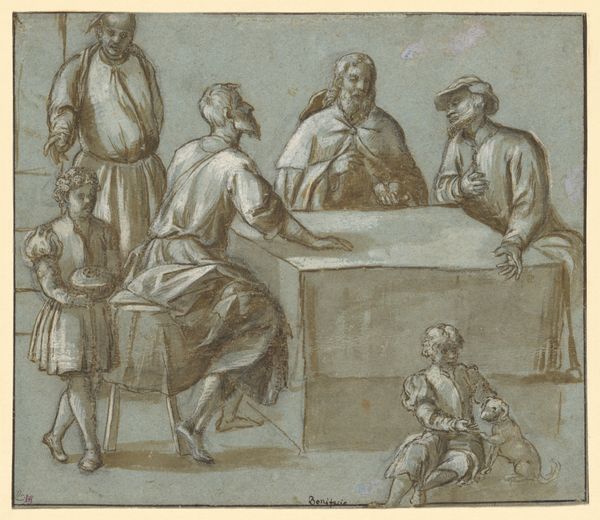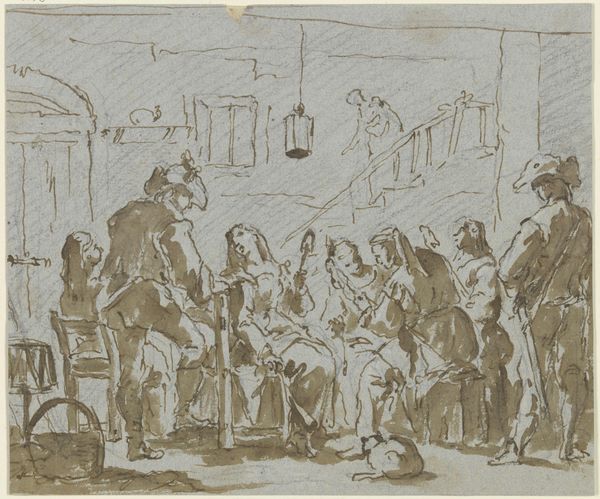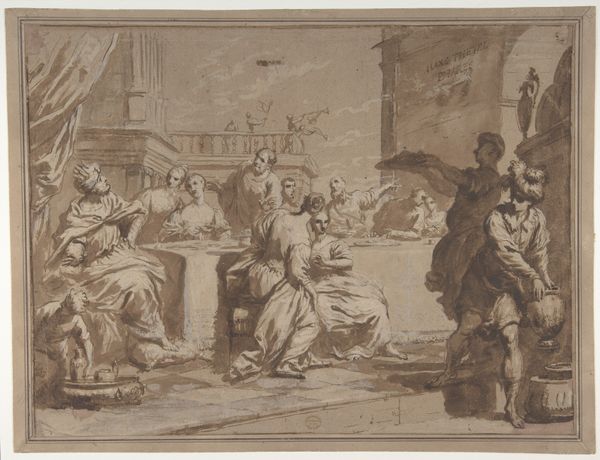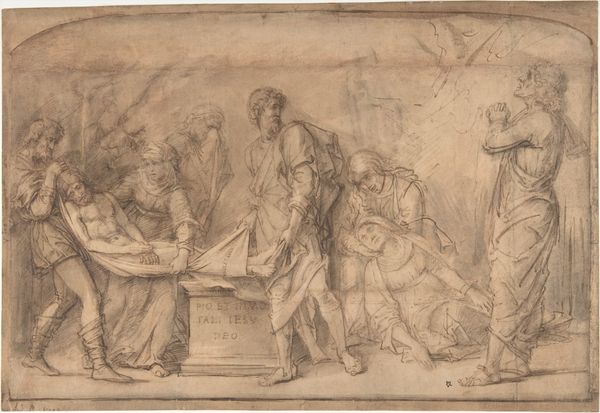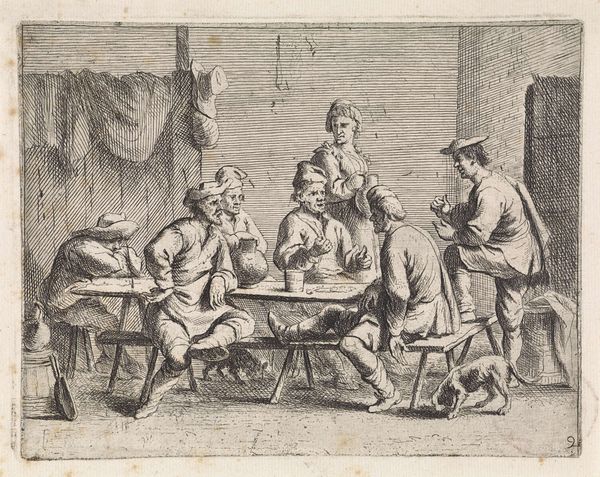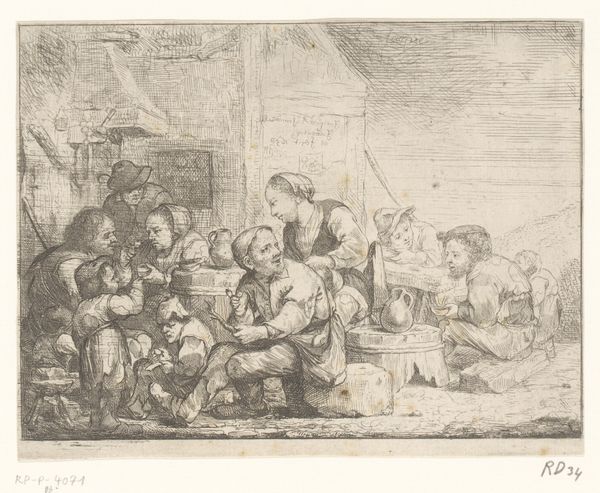
drawing, ink, pen
#
drawing
#
narrative-art
#
dutch-golden-age
#
ink
#
coloured pencil
#
pen
#
genre-painting
Dimensions: 6 x 7 3/4 in. (15.2 x 19.7 cm)
Copyright: Public Domain
Curator: What strikes me immediately about Cornelis Dusart’s “The Schoolmaster” is the sepia-toned wash giving the scene a somewhat gloomy and subdued mood. It is as if the light itself is conspiring with the drudgery of the lesson. Editor: And that subdued tone is a deliberate choice, one reflecting the economic realities of 17th-century Dutch schooling, where even a simple pen and ink drawing would have carried a cost implications, think about who could afford this? This piece uses pen, ink, and colored pencil; material processes are paramount here, revealing the broader networks of trade and material availability in the Dutch Golden Age. Curator: It's also about what isn’t there – the absence of bright colors seems to mirror the absence of joy on those young faces. They're caught in the act of learning, but also in a broader cycle of production; there is no freedom from labour depicted in this crowded composition. Editor: Precisely! Consider the labor embodied, not only in the classroom but also in the artisanal production of the artwork itself, think of the grinding of pigments. We witness both literal school work and metaphorical training for future professions within Dutch society; both teachers and tradesmen rely on practical demonstration within their respective craft and practices. Curator: I wonder how aware Dusart was of documenting that emerging merchant class, this snapshot of society, and not just a lesson. The light and shadow used by Dusart aren’t just decorative. They highlight certain power dynamics – notice the figure of the schoolmaster wielding a paddle. There is a kind of tension between knowledge and control. Editor: That interplay reminds us that even a seemingly straightforward image is built upon complex power relationships manifested through both technique and the materials chosen. What appears sketched freely by hand, on careful observation reveals a deeper investigation into education, commerce, and artistry existing in conversation. Curator: Indeed, this simple Dutch classroom scene is actually teeming with details—so much for us to interpret centuries later. It reminds me that even ordinary settings can reveal extraordinary facets of human experience. Editor: Yes, I concur – “The Schoolmaster”, by Dusart makes you question the historical and material legacy that continues to teach and inform our view even to this day.
Comments
No comments
Be the first to comment and join the conversation on the ultimate creative platform.

